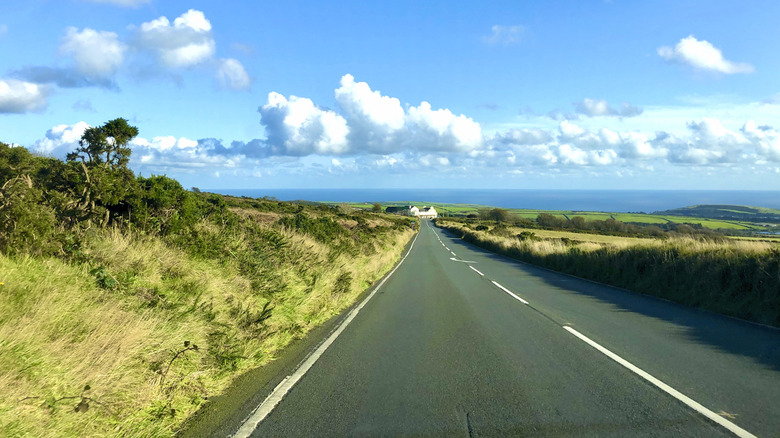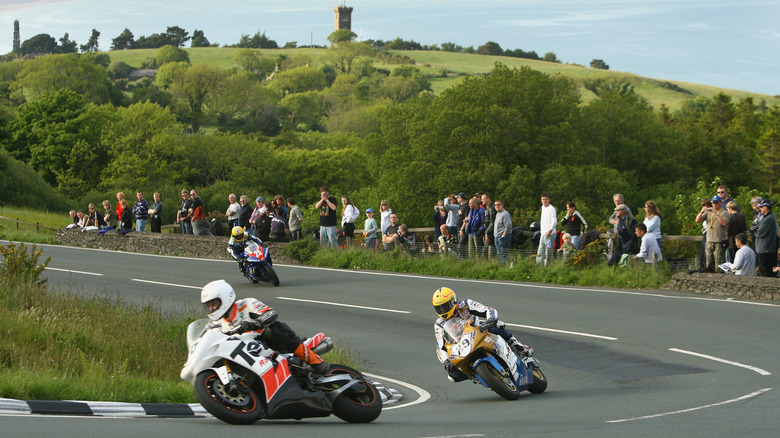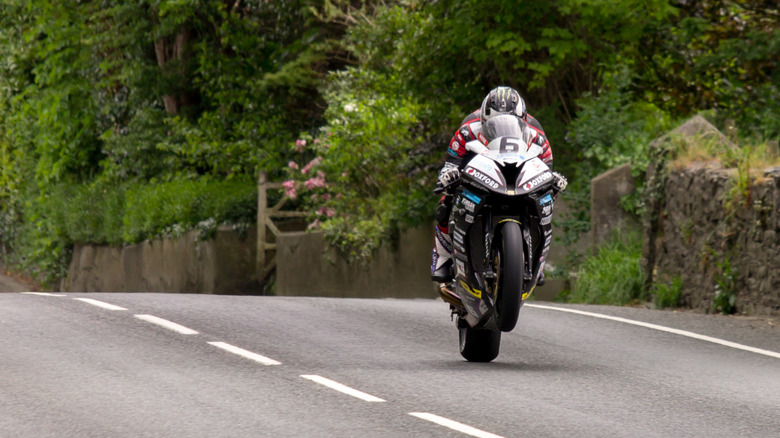The Longest Race Track In The World Puts Talladega To Shame
One of the most crucial determining factors in the excitement of circuit racing is the layout of the track – a good race track can make or break entire races. These days, many of the best tracks for circuit racing end at less than four miles – some circuits, like the modern Spa-Francorchamps, are among the longest "regular" dedicated circuits, meaning tracks featuring no public roads. But that wasn't always the case – back in the day, many circuits were dozens of miles long, such as Pescara, Nürburgring Nordschleife and Südschleife, and the original 1906 Le Mans. Even these paled in comparison to the longest historical "tracks," like the former Mille Miglia or Giro di Sicilia, the latter of which was effectively a lap of the entire island of Sicily.
Most of these circuits are extinct or heavily reworked today, replaced by tighter, purpose-built courses with faster lap times and more viewership than ever before. But there is one notable holdout from those times (besides the Nürburgring) which takes the crown of the longest sanctioned racing circuit still in-use: the infamous Isle of Man TT motorcycle racing circuit.
The Isle of Man TT Mountain Course in use today runs for 37.73 miles through some of the most harrowing and dangerous sections of road in motorsports. It's a uniquely anachronistic experience, combining the speed and handling of modern motorcycles with the frankly ludicrous amounts of hazards presented to riders. Only the most experienced are allowed to enter, and even still, the race has still claimed 266 of their lives to-date. Let's explore more about this strange but undeniably incredible racing circuit.
A circuit of its time
The Isle of Man TT, short for Tourist Trophy (and where the Audi TT got its name), debuted its opening race in 1907 on the titular Isle of Man island. Originally proposed for a venue in London, early-on the officials opted for the island instead due to more lax regulations at the time concerning automotive racing on public roads. The race attracted numerous sponsors and promotions, the earliest of which being Motor-Cycle Magazine in its opening year, drawing increasing levels of attention. The series utilized three main configurations over the subsequent decades: namely, the original St. John's layout (15.81 miles), Clypse (10.79 miles), and the aforementioned Mountain Course (37.73 miles), in-use in various forms since 1911.
To better understand the time capsule that this circuit represents, let's go back to the heady days of early Formula One. In its opening decade of 1950-1959, the sport witnessed a combined total of 15 deaths of various causes, ranging from lack of safety equipment to mechanical failure and even heat stroke. Effectively, within the average season, two drivers would die. These days, we've not had an on-track death since Ayrton Senna in 1994, though we've had some close calls – modern safety advances like the Halo prevented tragedy numerous times.
Meanwhile, the Isle of Man TT regularly witnesses on-track deaths. In fact, death is so commonplace that the Isle of Man police consider the ongoing three-year run of no fatalities to be "unprecedented." An average death rate of about 2.6 riders per race makes the Isle of Man TT unquestionably the most dangerous circuit on Earth, in addition to being the longest.
The track map
The course primarily takes place on ordinary village roads with houses, trees, and other hazards flanking either side. It's not uncommon for motorcycles to go airborne at various points as well, owing to the road surface being largely uneven. Riders must memorize all of these idiosyncrasies over the 37-mile long circuit to the point where it's intuitive enough to be automatic; after all, there's no GPS telling you when the next corner's coming up. Moreover, unlike in rally races, riders frequently find one another on-track, performing daring overtakes on narrow suburban streets.
Despite these inherent challenges, the circuit is also one of the fastest non-oval layouts in the world in terms of average speed. As of 2024, the current world record holder stands at 136.358 miles per hour on-average, a speed set by rider Peter Hickman on a BMW M1000RR. By comparison, the 2023 Belgian Grand Prix saw Formula One cars lap Spa-Francorchamps at an average speed of around 230 kilometers per hour, or 143 miles per hour. Motorcycles, however, lack aerodynamic elements like wings and diffusers which F1 cars use to negotiate circuits quickly, which is why they go airborne so often here. Basically, this track has many dangerously-fast corners and long straightaways, leading to top lap times of under 18 minutes.
Several classes compete in the race today, ranging from modern and classic motorcycles to sidecars and more. It remains one of the only circuits in the world with a pedigree extending back over a century, and is truly the last of its kind.


